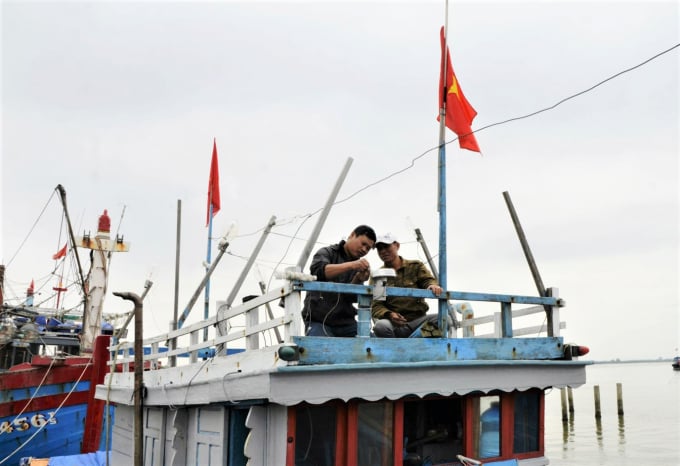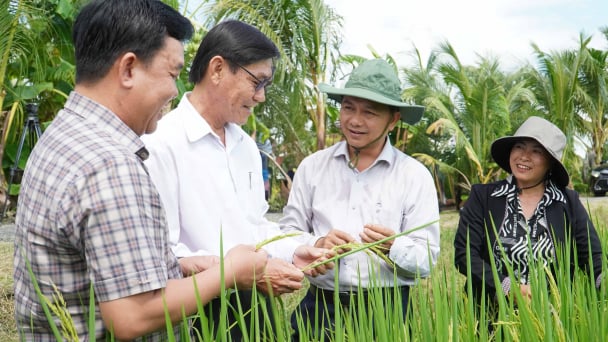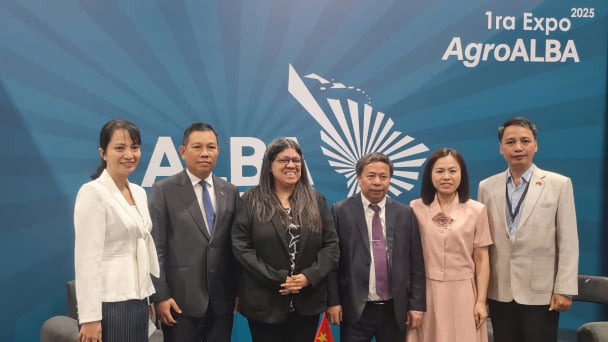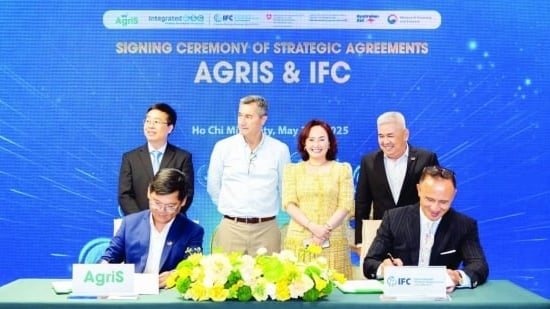June 19, 2025 | 03:47 GMT +7
June 19, 2025 | 03:47 GMT +7
Hotline: 0913.378.918
June 19, 2025 | 03:47 GMT +7
Hotline: 0913.378.918

Information technology helps track fishing fleets by using satellites
Almost four years since the European Commission (EU) imposed yellow card on Vietnamese seafood for failing to cooperate in fighting Illegal, Unreported and Unregulated (IUU) fishing, Vietnam has not yet got fishing yellow card removed.
Apart from good management of fishing fleets, seafood traceability is also an important step to get the card removed. However, it's difficult because infrastructure facilities for deep-sea and off-shore fishing have been not invested properly .
In recent years, fishing ports and anchorages in Vietnam were planned according to the Decision No.1976/QĐ-TTg of the Prime Minister. By the end of 2015 there were a total of 125 fishing ports and 146 anchorages planned.
Vietnam has so far invested in building additional 90 fishing ports but only 65 of them were put into operation and 49 ports were recognized as meeting the standards of seafood traceability for export.
According to Nguyen Van Trung, Director of Fisheries Department at the Directorate of Fisheries, under the Ministry of Agriculture and Rural, the number of fishing ports in Vietnam currently reaches only 50% of the target.
"Both Government and National Assembly have recently paid great attention to the issue. This is the bottleneck that needs to be dealt with to ensure seafood traceability contributing to combat IUU fishing as required by the EC," said Nguyen Van Trung.
The representative of the Directorate of Fisheries said Vietnam is now focusing on investing in fishing infrastructure facilities with the fund from the medium-term public investment plan for the 2021-2025 period, from ODA and foreign concessional loans and from social capital.
Additionally the application of information technology to the management and control of seafood quality is also considered the inevitability amid labor shortage. Previously, daily journal of each fishing fleet in the form of a diary was recorded by the captain then the diary was handed to the management board of fishing port along with the batches of seafood which were then shipped to processing plants or to importers.
With advanced information technology, fishing fleets can now be tracked by using satellites and all data of fishing ports, batches of seafood can be saved and integrated in a digital diary. Thereby, accuracy, reliability, and objectivity are guaranteed and at the same time fishermen can save time and effort.
Accordingly the Ministry of Agriculture and Rural Development has invested and assigned the Directorate of Fisheries to preside over developing software to monitor fishing vessels through the use of information technology. It's expected that the system will be put into use by the end of 2021.
Apart from the investment in infrastructure facilities and tools Nguyen Van Trung said it's necessary to invest in labor force at ports so that they can meet the requirements in terms of quantity and skills.
"In addition, all fishing ports need to come to an agreement on the management method to ensure synchronicity across the operations."
Translated by Mai Tham
/2025/06/17/3942-2-143243_548.jpg)
(VAN) Recently, in Sweden, the Secretary of the Binh Dinh Provincial Party Committee presented the Investment Registration Certificate for the 'Polyester Fabric Recycling Complex' project to SYRE Impact-AB Company.
/2025/06/12/3721-2-202745_83.jpg)
(VAN) TH made an impression at Seoul Food 2025 with its line of natural beverages, paving the way for Vietnamese food products to enter the South Korean market.

(VAN) Soc Trang's success in rice exports stems from a strategy of developing fragrant and specialty rice cultivation areas and standardizing production toward low-emission practices.
/2025/06/11/1311-5-120811_839.jpg)
(VAN) The pig farming industry is facing the challenge of comprehensive restructuring to meet requirements for quality, safety, traceability, and market expansion both domestically and for export.

(VAN) Vietnam considers participating in ALGROALBA in order to expand agricultural production, coordinate the assessment and effective exploitation potential land.
/2025/06/05/5314-1-184727_407.jpg)
(VAN) From seemingly worthless fish scales and skin, enzymes and lactic ferments can transform by-products into peptides, opening a sustainable, effective business direction and elevating Vietnamese seafood.

(VAN) TTC AgriS and IFC signed a strategic partnership to develop a sustainable agricultural value chain, aiming to achieve the Net Zero target by 2035.